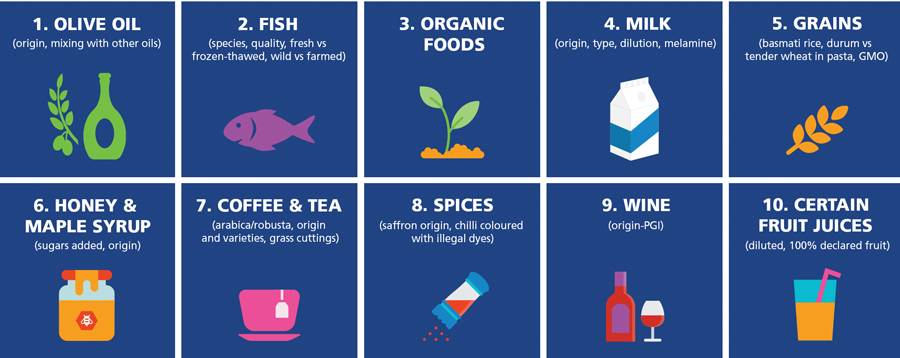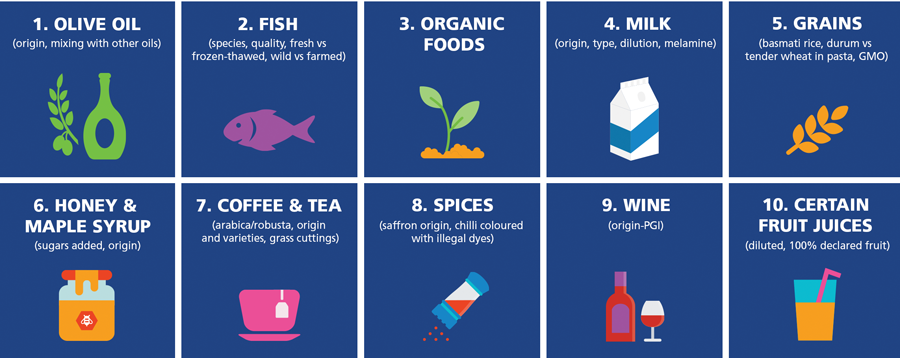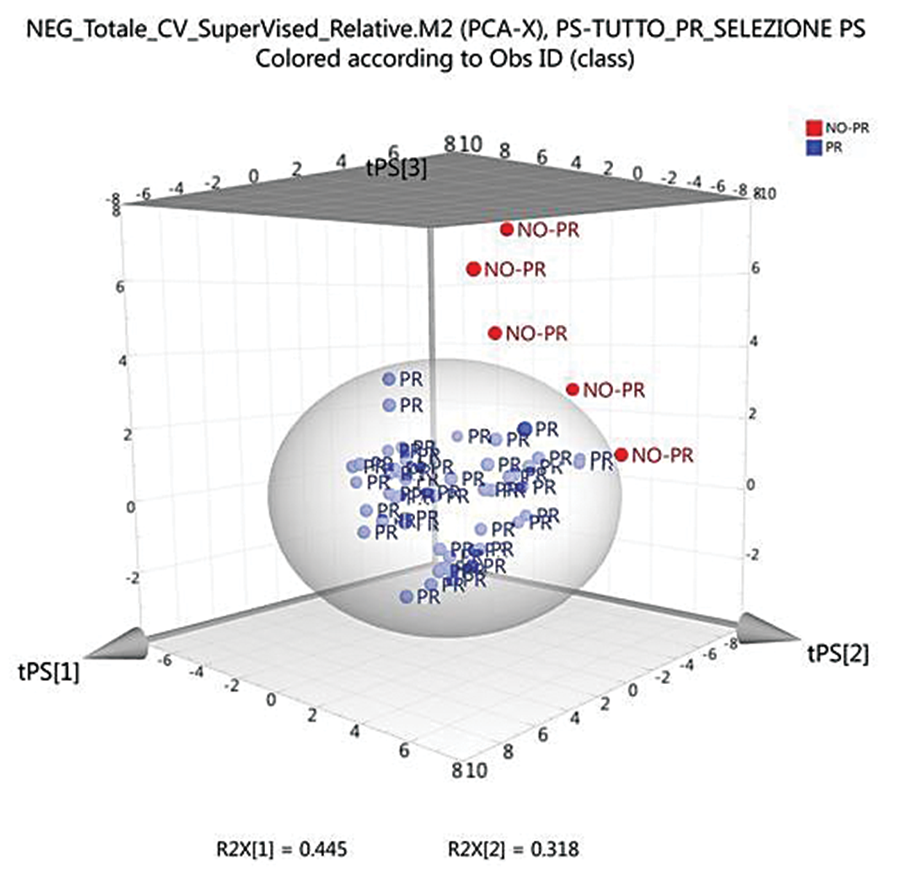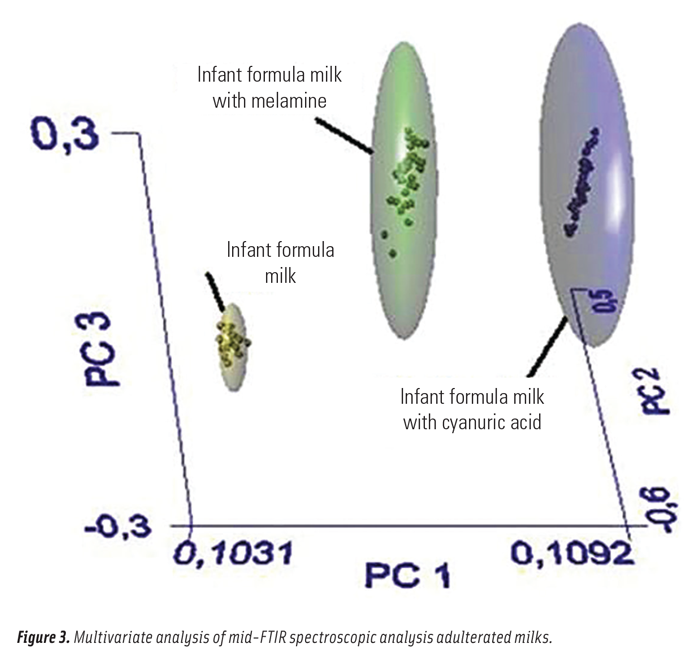
New Approaches to Food Authenticity Testing
As cases of food fraud increase around the globe, analytical methods and data processing are becoming more sophisticated to uncover known and unknown adulterants.
Article Content
Food fraud is designed to increase the perceived value of both food and ingredients and is a growing concern in our global food supply, as evidenced by an increase in the number of reported cases. As quality programs are upgraded to better address this concern, new analytical tools are being developed to evaluate if known and unknown adulterations or modifications have been added to foods.
The two main approaches involve Targeted Analyses and Non-Targeted Analyses, both of which are used to reduce the number of food fraud incidents. Knowing how these approaches function, and what they can and cannot deliver, is needed to incorporate them into an assessment program.
Food Authenticity
Food authenticity has been an issue of concern for food producers, regulatory agencies, scientific organizations, and even news and media groups for a long time. In fact, “A Treatise on Adulterations of Foods and Culinary Poisons” was published by Frederick Accum way back in 1820 (Accum 1820).
A few of the most recent, and possibly well-known, occurrences of food fraud include:
- Dairy products containing nitrogen-enhancing melamine/cyanuric acid found in infant formula and pet foods, resulting in illnesses and deaths;
- Fake food and alcohol seizures occurring at EU borders and increasing in frequency;
- Kiwi wine company (including directors) accused of complex food fraud;
- Georgian man arrested for exporting falsified hazelnut products to Germany;
- In a 2018 audit, almost half of 382 samples of marketed fish were not what the label indicated them to be (Ruryk and Chung 2018).
Regulation
In response to these and other events, standard requirements are being set up around the world. One example is the British Retail Consortium (BRC) Global Standards, a leading brand and consumer protection organization used by over 26,000 certificated suppliers in over 130 countries. BRC Version 8 includes standards to protect food authenticity and to prevent/reduce food fraud by 1) having access to information on historical and developing threats to the supply chain, which may present a risk of food fraud, 2) performing a documented vulnerability assessment on all food raw materials, and 3) performing appropriate assurance and/or testing to reduce uncovered risks for raw materials.
Currently there is no statutory or unambiguous definition of food fraud (aka economically motivated adulteration or EMA), but many groups use the definition published by the Food Fraud Initiative of Michigan State University, which defines food fraud as “a collective term encompassing the deliberate and intentional substitution, addition, tampering or misrepresentation of food, food ingredients or food packaging, labeling, product information or false or misleading statements made about a product for economic gain that could impact consumer health” (Spink and Moyer 2011). The key points in this definition are the food being intentionally changed for financial gain and disregarding the health or monetary impact on consumers. This is in direct noncompliance with food laws; therefore, food fraud is a constant issue raised by regulatory agencies, most food producers looking to lessen or remove this impact, and by watchdog groups who survey foods for both desired and unwanted health impacts.
While food fraud can raise the apparent value of a food or food ingredient, thus inflating profits, the adulteration of the food increases the health risk to consumers who may ingest unsafe adulterants or may not be getting the health benefits of these natural foods. Food fraud undermines product authenticity, namely, its origin, quality, and biological characteristics.
Common Adulterated Products
So, what are the most commonly adulterated products? Figure 1 shows the top 10 products that are most at risk for food fraud.
There are 7 principal ways a food or food ingredient can be adulterated to increase its perceived value.
1. Substitution: replacing some or all of a food with a cheaper material. Examples include extra virgin olive oil, partially or totally, substituted with lower grade olive oil and pomegranate juice partially replaced with apple juice.
2. Unapproved Enhancements: additives used to trick routine analytical tests. Examples include melamine added to increase perceived protein level in milks, Sudan dyes added to adjust color of spices, and high fructose corn syrup added to honey.
3. Concealment: adding a material to mask the lower quality food. Examples include poultry injected with hormones to conceal disease and food coloring applied to fresh fruit to cover defects.
4. Mislabeling: when a food product’s label does not accurately reflect its ingredients. Examples include labeling tilapia as yellowfin tuna and conventionally grown foods labeled as organic.
5. Dilution: adding cheaper materials to expensive ingredients. Examples include olive oil diluted with potentially toxic tea tree oil and watering down products with unsafe water.
6. Counterfeiting: replacing a food or ingredient with a “look-alike” product. Examples include dietary supplements and medications.
7. Gray Market Production/Theft/Diversion: the sale of excess or unreported product. This covers most foods and increases the risk of a product not having proper safety assurances.
Food Fraud Prevention
So, how can food fraud be deterred or prevented? The U.S. Pharmacopeial Convention (USP) has published a holistic guidance document on prioritizing and evaluating risks in the food supply chain (USP 2018). This control system begins with a prescreening of potential food fraud risks, followed by assessments on vulnerability and potential impact. The findings of these assessments are used to develop an EMA Preventive Control Plan, which includes monitoring using defined analytical testing—because if you can’t measure it, you can’t manage it!
In addition, AOAC International has created a Food Fraud Task Force to standardize guidelines for Targeted Testing and Non-Targeted Testing analytical methods to gauge the reliability of the analytical methods as part of a food fraud protocol. This task force has designated working groups to design Standard Method Performance Requirements by which Targeted Analyses and Non-Targeted Analyses approaches can be evaluated for effectiveness and reliability.
Targeted Analyses
Targeted Analyses (TA) are used if the adulterating materials are known or if the authentic food contains specific marker compounds that can be used to assess its purity. In the TA approach, the known compounds can be analytically targeted to either determine if the food has a previously identified adulterant or if the food had been diluted or replaced by looking for compounds known to be at certain levels in the authentic product. As shown in the examples below, the range of technologies used for targeted testing is quite broad, covering everything from traditional wet chemistry to high-end liquid chromatographic mass spectrometry methods.
TA Examples
Extra virgin olive oil is sometimes adulterated with cheaper vegetable oils. In Europe, EU Regulation 2568:1991 uses targeted approaches to assess if an extra virgin olive oil has been cut with cheaper oil. Each type of oil has a unique fatty acid profile that can be measured to see if it is at the expected level found in olive oil. The sample-in-question’s fatty acid profile is compared to an established olive oil fatty acid profile containing the typical 11 olive oil fatty acids. If the profiles do not match within normal variation, then cheaper oil was likely added. To also assess if the olive oil is extra virgin, a second targeted analysis is used to measure levels of expected sterols, ECN42, stigmastadiene, and EUV. These measurements together assess both the oil’s identity and the degree of virginity.
Other examples include verifying a meat or fish species using PCR and DNA sequencing. Fish freshness is assessed by measuring volatile nitrogen or biogenic amines using simple chromatography. For spices and herbs, a variety of targeted tests are available including PCR, measuring the essential oil content by distillation/extraction, measuring aromatics using GC/MS, targeting illegal dyes such as Sudan I/II/III/IV, and even microscopic evaluation of leaf shapes and the presence of stems or roots. Organic claims are monitored using multi-residue screens for pesticides, herbicides, and fungicides using a QuEChERS with several detection technologies.
Non-Targeted Analyses
Human fingerprints have long been used to identify potential lawbreakers and now DNA fingerprinting has been added to that toolbox. Food ingredients also have their own chemical fingerprints, which can be used to assess if an ingredient is authentic and/or accurately labeled. These chemical fingerprints are obtained using a variety of analytical technologies, with the type of technologies being chosen based on the food and attribute being examined.
Non-Targeted Analyses (NTA) have been growing in popularity as a result of measuring technologies and data processing software that has advanced to the point where large amounts of data can be collected, organized, and intensely scrutinized. NTA is warranted mostly because food fraud perpetrators are always finding new ways to adulterate foods, and these adulterants are not being picked up by common routine quality checks. If a new adulterating compound has not yet been identified, targeted testing cannot be used to assess if it is present.
The infamous and often cited example is milk powders having their perceived protein levels artificially increased. The protein level in milk directly affects its price and % protein is measured by first calculating the % nitrogen in the milk, and then multiplying that number by 6.38 to get the % protein. Different high-nitrogen containing adulterants have been used to increase the measured % nitrogen, making it look like the milk has a higher % protein level. One adulterant used was melamine, containing some cyanuric acid, which causes kidney failure in babies and pets. Because this was a newly used adulterant, no approved TAs were available when this adulterant was first identified. In response, a collection of methods was developed, each having their own limits of detection, matrix scope range, and degrees of accuracy and precision. This assortment of methods caused confusion on setting “Non-Detect” action levels and clearly revealed the need for an organized approach when establishing a consensus method in an emergency situation.
Non-Targeted Analysis is based on creating a fingerprint of the food or ingredient that is known to be genuine and then comparing it to a questioned food’s fingerprint or ingredient. These base chemical fingerprints are obtained using a variety of scientific technologies, chosen based on the food and attributes being fingerprinted. For large molecules, instruments such as MALDI-TOF can obtain information on the molecular profiles in the foods. For smaller molecules, nuclear magnetic resonance (NMR), spectroscopic (such as IR, NIR, Raman), and other common technologies can create distinctive profile “pictures” that can be used by chemometric software that identifies regions to compare to tested foods to determine how different the profile pictures are from each other. Liquid chromatography with assorted detection methods, including high resolution mass spectrometry (MS) and MS/MS, are also being developed. An important point to remember is the NTA approach will catch many, but not all, incidents of food fraud since the amount of added adulterant may be low enough to be in the “noise” of the NTA. What NTA does offer is a reduction in the risk of food fraud, and as technologies and software improve, the % capture rate will also improve.
Research to develop non-targeted approaches to evaluate food ingredients and finished products is increasing. A non-targeted approach involves combining lab-based analytical test methods with statistical software to determine if a questioned food falls within the expected parameters. This allows for the detection of a wide range of adulterants but also requires a good amount of early testing to create the base fingerprint that covers the range of test results that nature has built into every food (i.e., natural variability in a foods’ composition). If a tested food is identified to be very different from the base fingerprint, the data can be mined to identify, or at least get insights into, the identity of the adulterating materials.
An example of this approach on evaluating cheese authenticity was recently published (Popping et al. 2017). PDO Parmigiano Reggiano is an Italian product with a protected designation of origin and is one of the most adulterated cheeses in the world, resulting in substantial economic impact. The developed approach utilized a metabolomics-oriented, non-targeted method that assesses 18 compounds using liquid chromatography-high resolution mass spectrometry (LC-HRMS). The base fingerprint was created using 52 authentic samples undergoing simple water/acetonitrile extraction and LC-HRMS analysis of the supernatant. The fingerprint was then verified by analysis of 32 verification samples. A visual representation of the base fingerprint and “fake” cheese sample is shown in Figure 2. This approach was able to correctly assess the cheese authenticity with 87.5% accuracy.
Referring to the melamine/cyanuric acid in the milk event example described previously, a NTA can be used to create a milk chemical fingerprint for comparison to milks that have been adulterated with different nitrogen-containing compounds. A mid-FTIR spectroscopy with multivariate analysis (Garcia-Miguel 2018) is shown in Figure 3. Pure milk samples are located on the left side of the plot while adulterated milks are displaced to the right based on the adulterating agent(s). The adulterated samples—being outside the non-adulterated region—show they do not have the same chemical fingerprint as clean milk. What is interesting in this case is all the adulterated samples fall outside the clean milk area; however, if lower levels or different adulterants are used, they may reside closer to the base fingerprint.
Another approach has been used to evaluate extra virgin olive oil (EVOO) using NTA to assess if the declared region for an EVOO is correct. At Mérieux NutriSciences’ labs, EVOOs known to originate from different regions were collected and analyzed using gas chromatography-mass spectrometry (GC-MS). The resulting chromatograms and mass spectra were compiled and analyzed using chemometric analysis and principal component analysis (PCA). This technology/chemometric combination works well for assessing this foods’ region or origination.
These examples demonstrate how pricey, high-demand products are at risk for food fraud. Other common targets, especially when consumer demand surpasses supply, include single-malt scotch (which takes 10–25 years to produce), wines, and saffron spice. Many companies are increasing their authenticity surveillance for products and/or ingredients when consumer demand for these items increase.
Once NTA identifies something foreign has been added, additional work is then performed to identify the additive. Some NTA technologies, such as mass spectrometry detection, contain data that can be mined to identify the unknown adulterant, which can be followed up with targeted analysis to further prove at what level the now-identified adulterant is present. Of course, this TA method will be published somewhere and thus begins the search for a newer, unknown additive by food fraud perpetrators. And the food fraud cycle continues.
A summary comparison of the TA and NTA approaches is shown in Figure 4.
Conclusion
Food fraud is a continuing concern that threatens the reliability and safety of our food supply chain. Programs are being developed and implemented to reduce these risks, but these programs must continue to evolve in order to keep pace with the ingenuity of food fraud perpetrators. Screening tools to analytically determine the risk of an adulterant being present are being used more widely, with targeted tests being rapidly developed to respond to identified threats. As these programs and analytical tools continue to evolve, the safety and reliability of our foods will only be strengthened.
John Szpylka, PhD, a member of IFT, is scientific affairs director, Chemistry N.A., at Mérieux NutriSciences ([email protected]).













